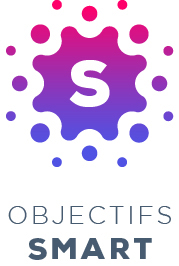Known to all marketers for their formidable efficiency, SMART lenses go through fashions and years without taking a wrinkle! With this acronym meaning “smart” in English, we have found a mnemotechnical way to enhance the objectives of a project. So let’s see what it is and why this method is still so interesting in 2020, whether for development projects, financial projects, makerting or web!
The history and definition of SMART goals
The SMART method saw its beginnings emerge in the 1950s. At the time, Peter F. Drucker defined the concept of objective management. It is a question of setting goals quantitatively or qualitatively over a clearly defined period in order to involve the teams, motivate them and achieve them more effectively. This Anglo-Saxon model therefore proposes a major novelty: to take into account employees (we speak at the time of “workers”) in the realization of a number of missions. In 1981, George T. Doran retrieved this concept and proposed using the acronym SMART to go even further and give precise guidelines for its execution. SMART goals are created! This allows the concept tobe adapted to new areas including project management, human resources and, of course… Marketing!
Why use this method?
Following the SMART objective model when it is intended to carry out a project clearly lays a clear foundation in order to achieve itmore easily. Of course, this is not a miracle recipe that will work every time, but by following these principles you will be better able to master the scope of your project and thus put in place the necessary teams, methods and means. This preparation will pay all the more because it has been carried out carefully taking into account each of the indicators. This remains valid regardless of the typology of the project: launching a product, a brand, a website,… But by the way, what are the indicators?
What do SMART indicators mean?
Finally, we get to the main point of this article! What do the five letters of the word SMART mean?
S for Specific
When you set your lens, it should be clear and precise. The more detailed your request (in one sentence eh! no need to write 4 pages), the more you can set it up. Indeed, nothing is less effective than a vague goal. For example, we will avoid saying “I want to make more sales via my website” but we will go towards this type of formulation: “I want to increase sales on my website by 30% this year.” In fact, the distribution of tasks and missions will be easier to set up. It’s a win-win situation.
M for Measurable:
As we have already announced above, it is important to define an indicator that can be quantified or quantified. If not, how can I verify that the goal has been achieved? Giving a precise figure will allow you to know whether the resources and efforts have been sufficient or if, on the contrary, you need to review your strategy. For example, if you were expecting a turnover of 15,000 euros and at the end of the given period you only cashed in 10,000 euros, you clearly know what is missing from your goal for it to be successful.
A for Achievable:
This is crucial to achieving your goals. Before you go to your project, to judge as you go along the limits that could be placed on you in terms of financial means, humans, available time or skills, it is better to anticipate all this! Thus, by preparing your project as best as possible, by asking yourself precisely about your targets and your competitors, you will be able to make sure that it is well within your reach. concurrents You will know in advance what you will spend and the teams or partners to solicit.
R for Realistic:
Often associated with the previous point, the Realistic R has a more global dimension, linked to your company’s strategy. Here you have to ask yourself whether this project, while achievable in terms of resources and time, is of real importance to your strategy? Will your efforts have enough impact? If this is not the case, you could confront several objectives and prioritize them. For example, your competitors may have thousands of fans on Facebook, which would tend to push you to do the same. However, your study of the market and your personas may lead you to direct your efforts to another channel.
T for Temporelleably Defined:
Your goal should have a start date and an end date. This will be the only way to know if you have been able to achieve it.

Implementing a SMART lens
“I want to improve the conversion rate of my landing page”
Specific:
The statement of my objective is precise enough to avoid any ambiguity of understanding. In addition, I created this landing page taking into consideration my main persona. I know who I am talking to and what I can offer him.
Measurable:
I set myself the goal of increasing conversions by 30%.
Attainable:
My web agency, takes care of the integration of the page. She was able to advise me on CTAs, on fitness and created the necessary form. My SMART goal has been shared and communicated to my employees. My communications team is mobilized to manage the contacts that will convert via this page and is aware of the scenarios created for the different sales paths identified.
Realistic:
This SMART goal is high enough to motivate my teams. It is in perfect harmony with the company’s development strategy and the means available are known and mastered.
Temporarily defined:
I give myself 3 months to achieve my SMART goal. This gives a deadline of December 31.
Une question ?
Nos experts se tiennent à votre disposition pour parler de votre projet.
